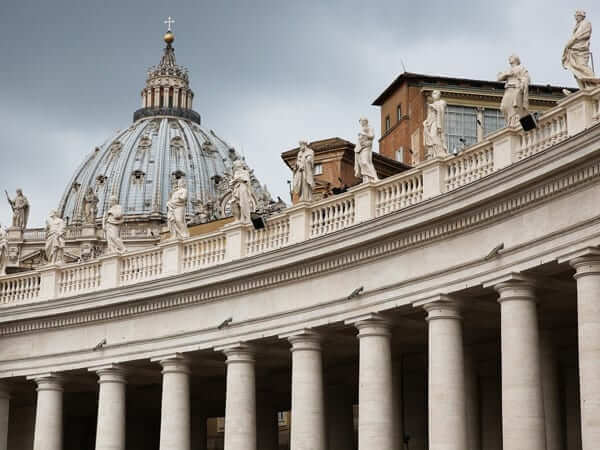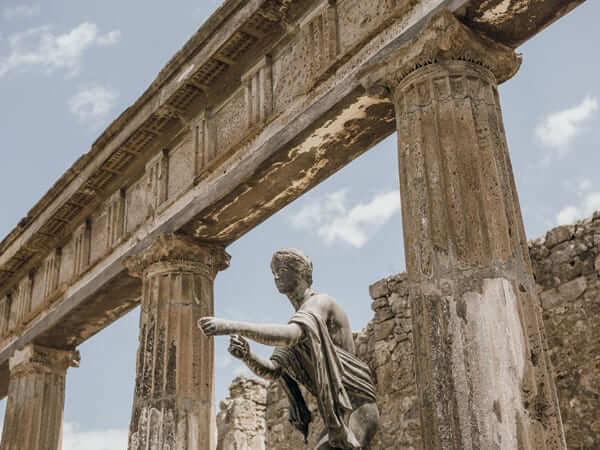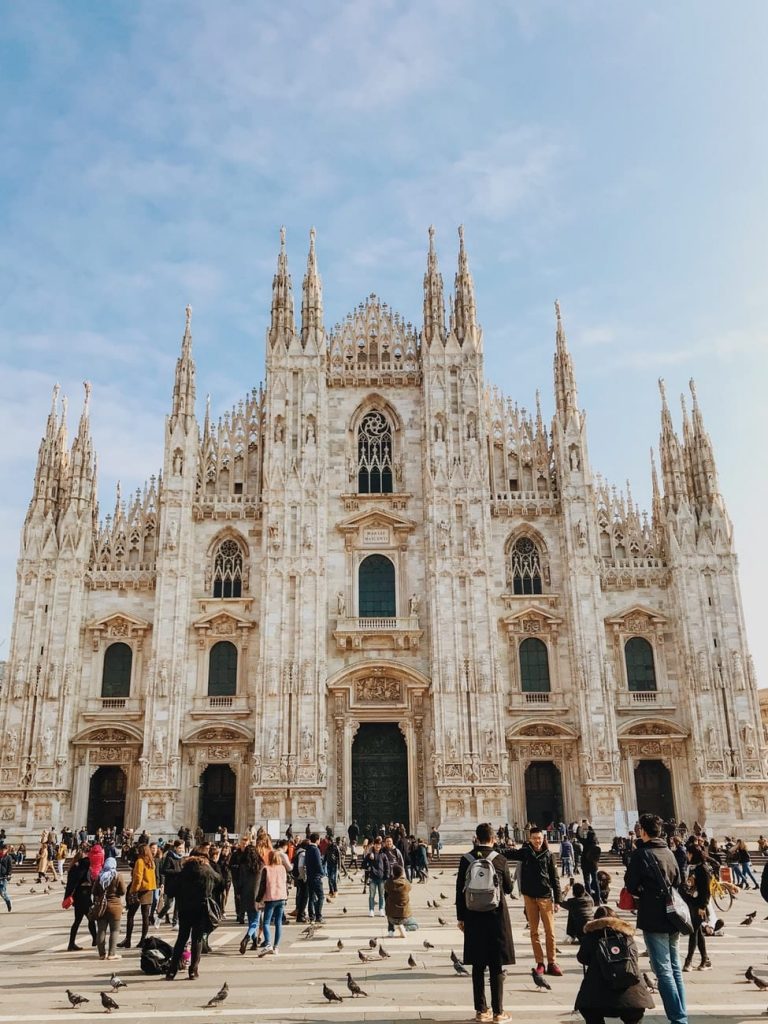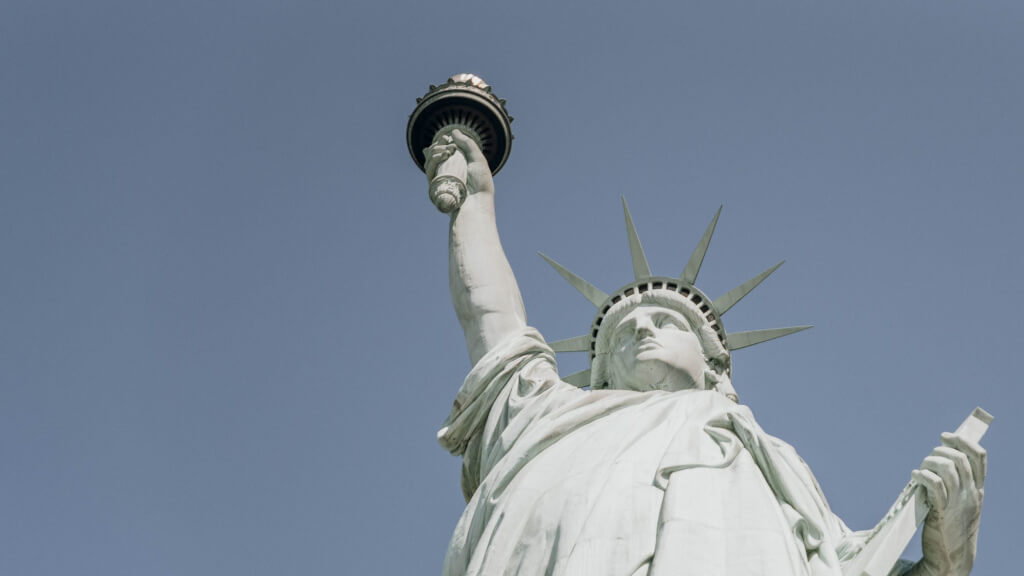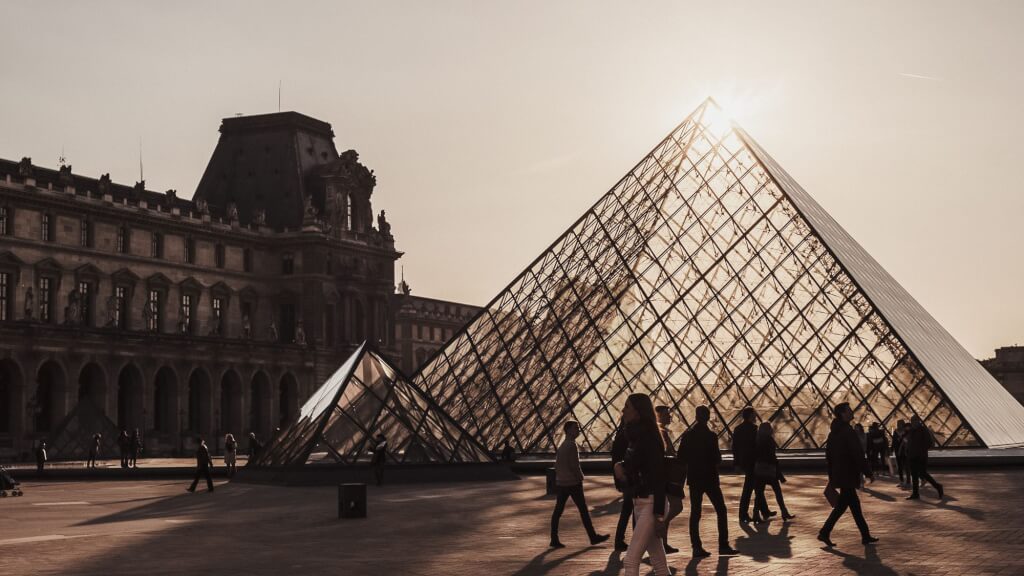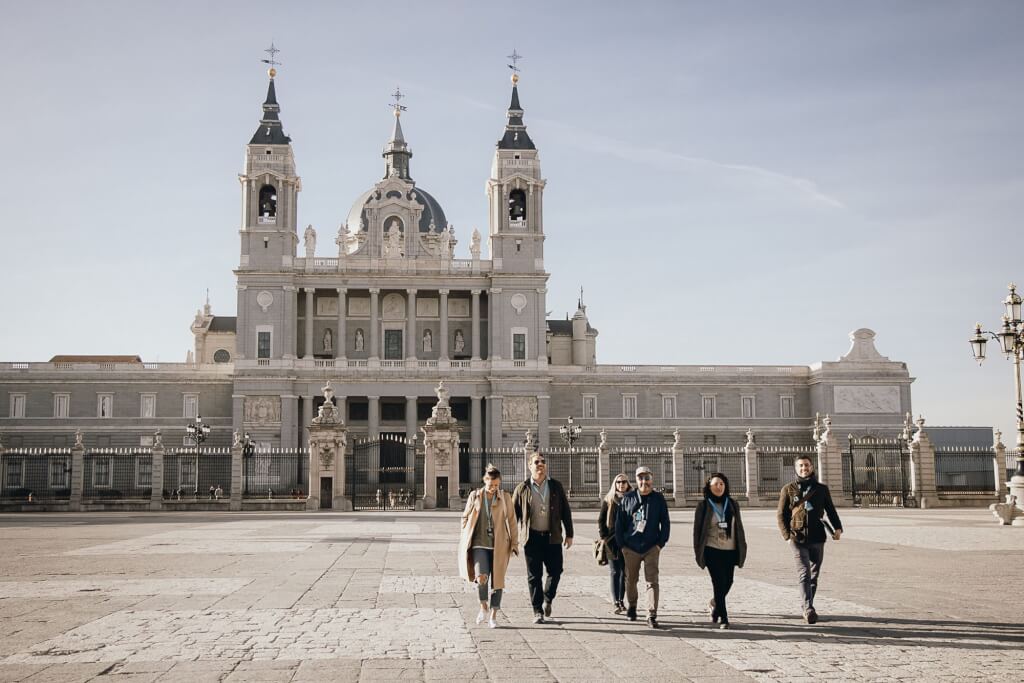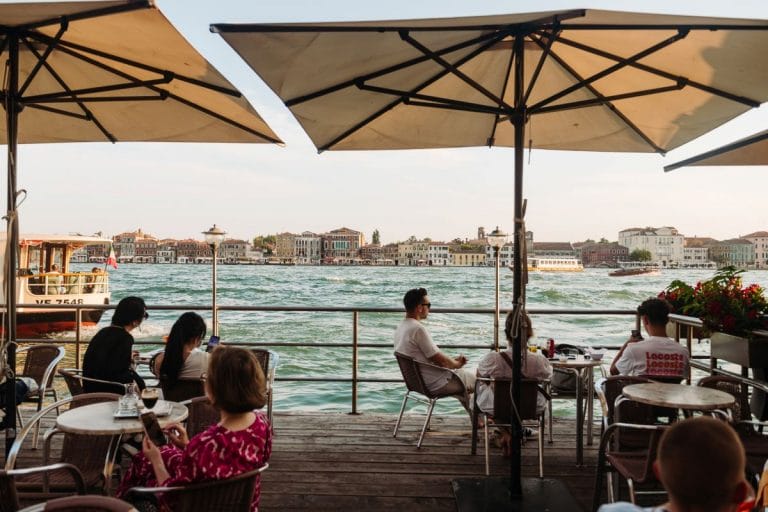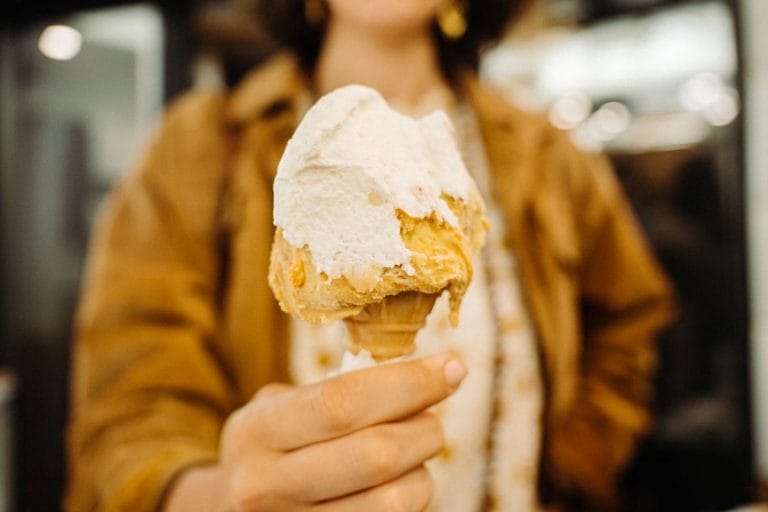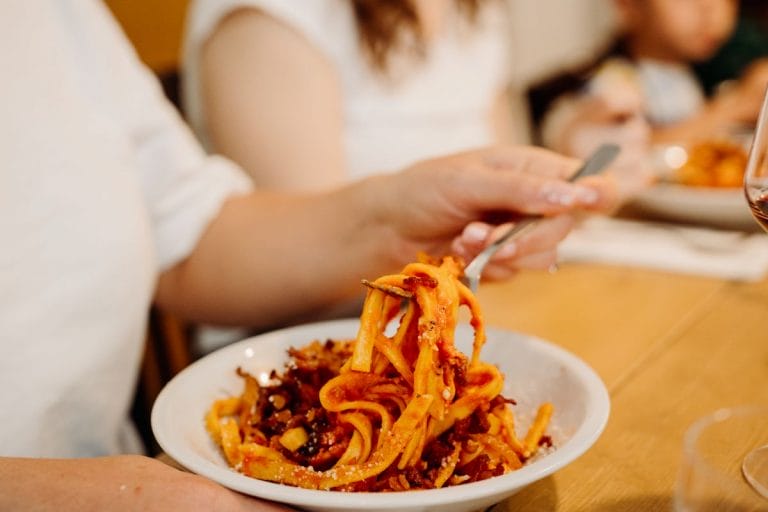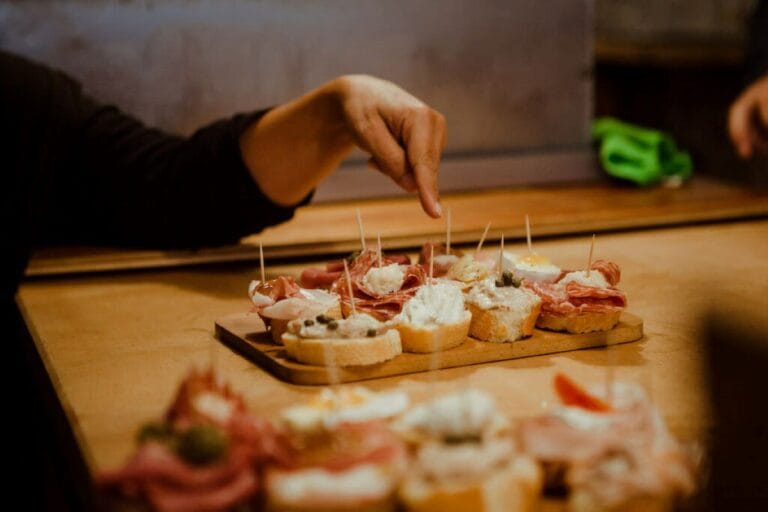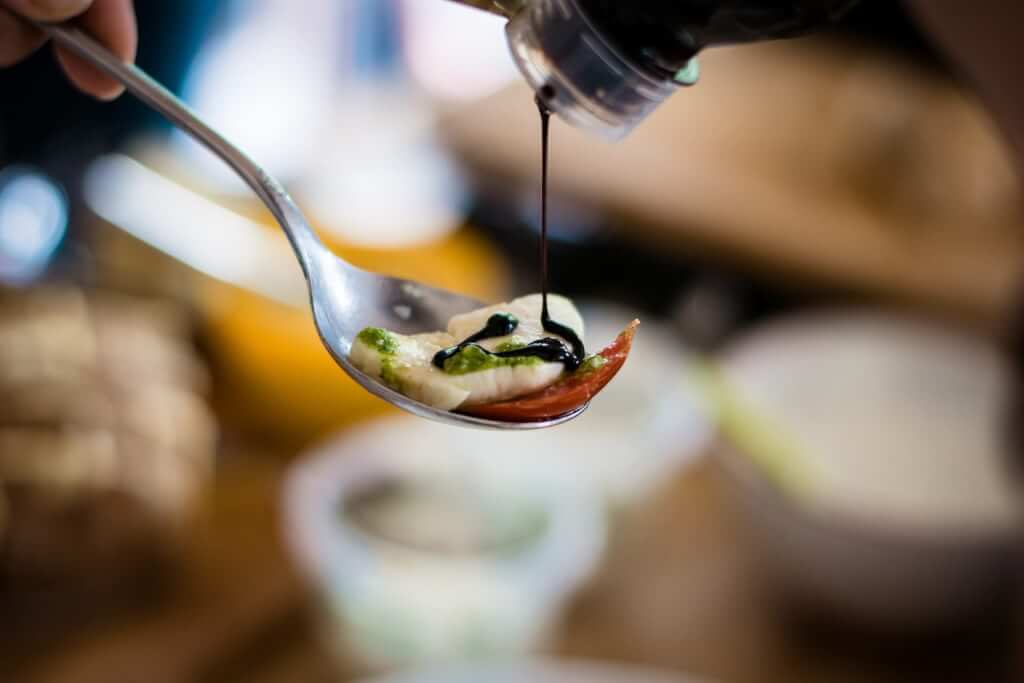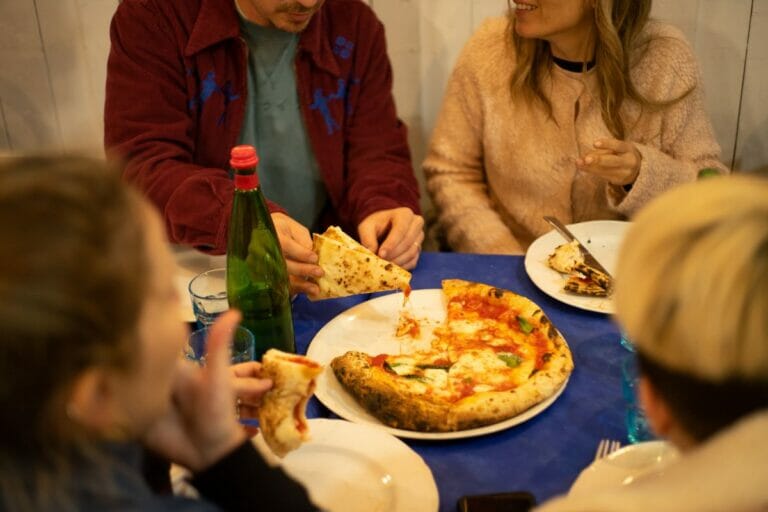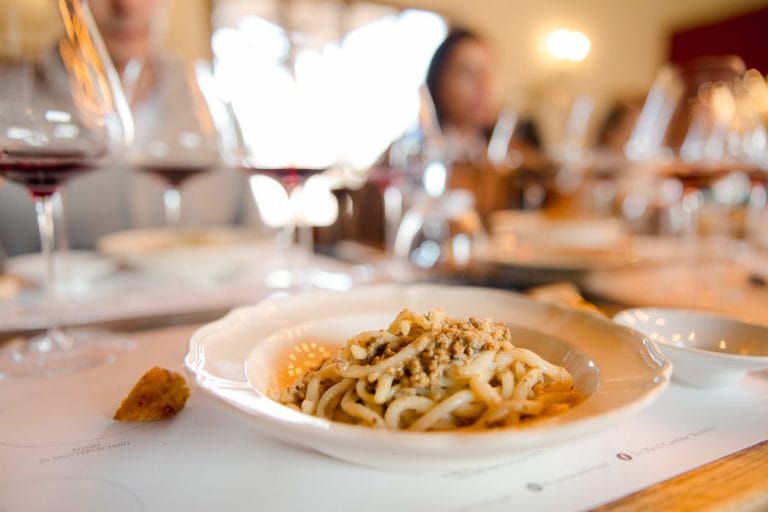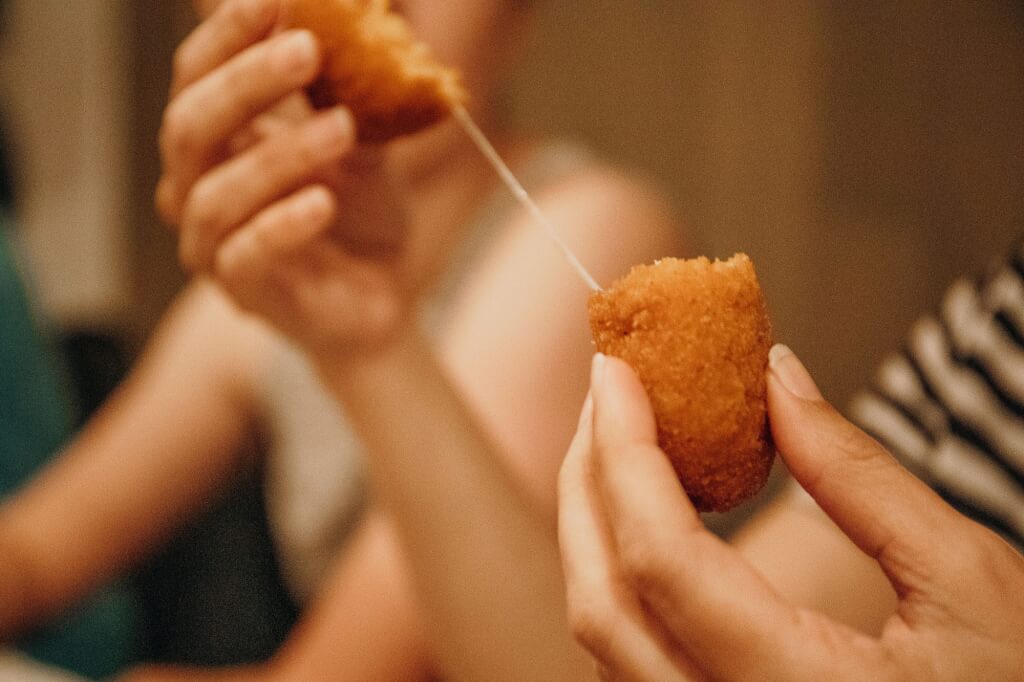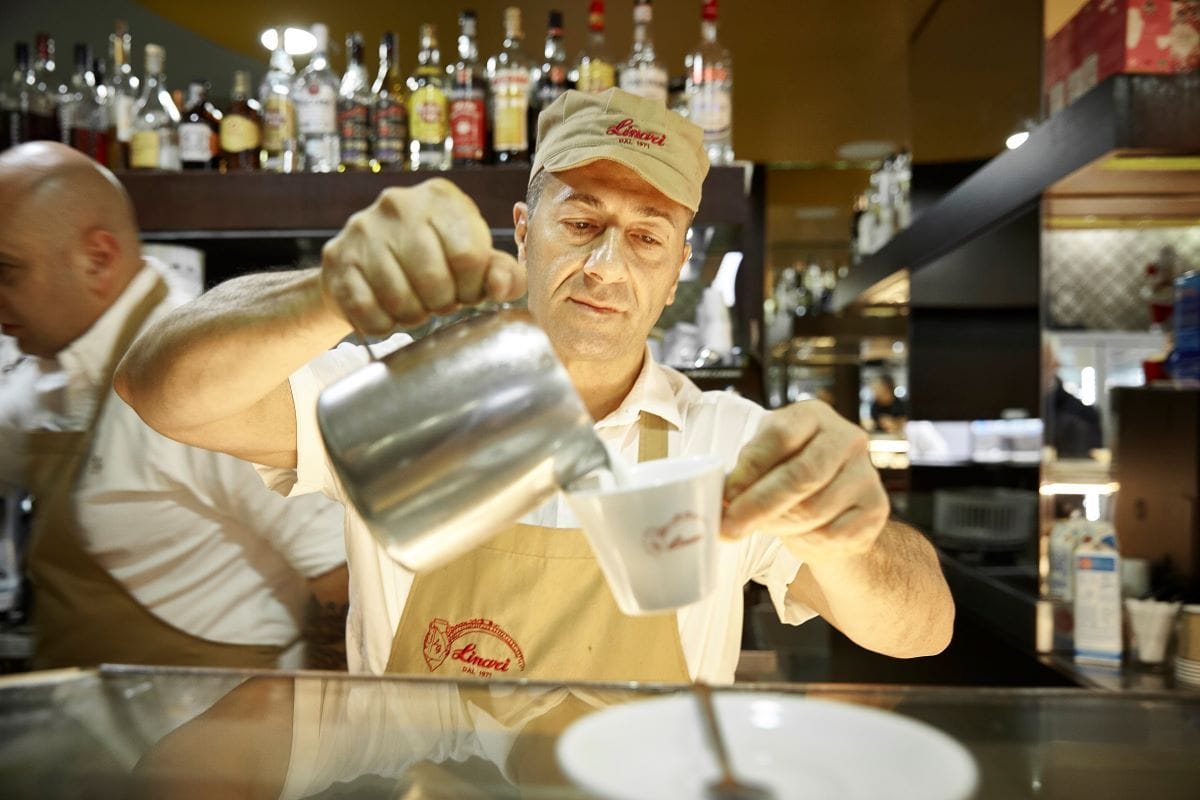
Cappuccino After Lunch? All About Coffee Culture in Italy
December 28, 2024
What could be better than enjoying a warm frothy cappuccino in Italy? For those who want to experience one of the true joys of Italian travel, here’s everything you need to know about coffee culture in Italy. This includes knowing what to order, and how (and when) to drink coffee like an Italian.
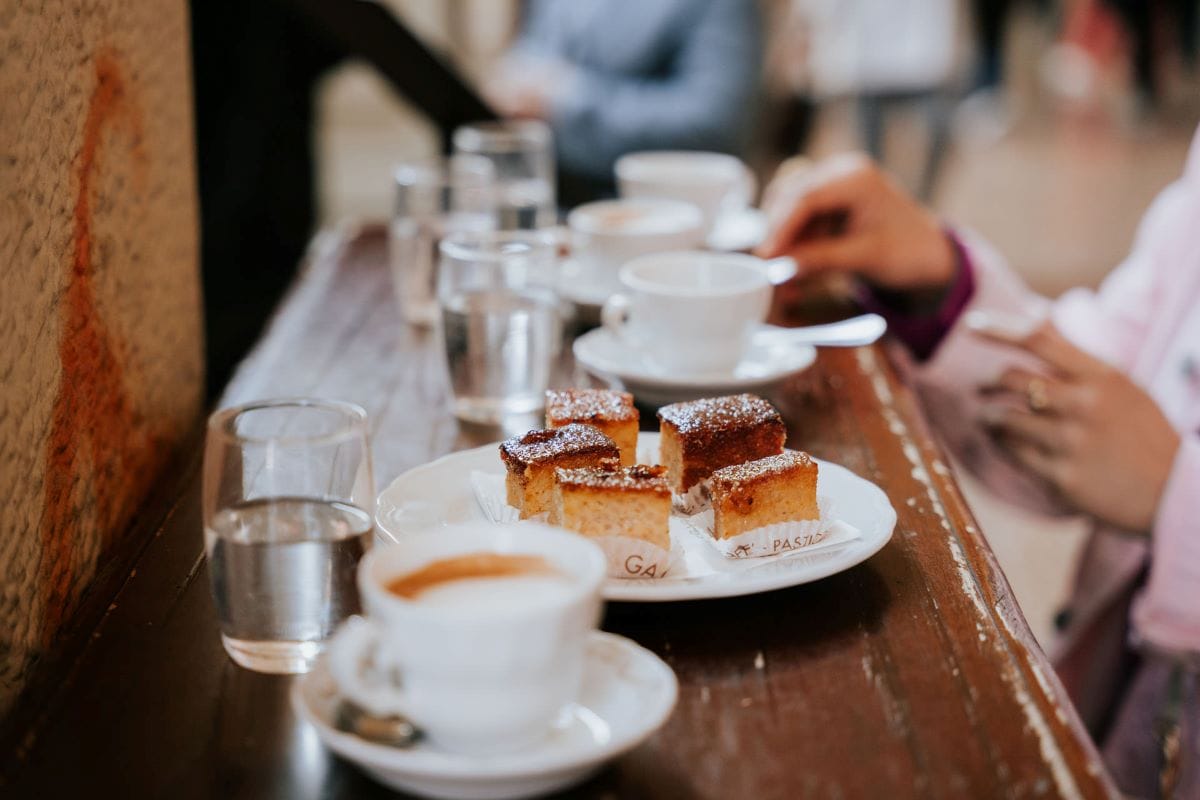
When it comes to breakfast in Italy, its usually a cappuccino along with a cornetto or small pastry at the bar.
Coffee culture in Italy is very different coffee culture in the United States or anywhere else. Even the names don’t mean what you might expect. Take a story we heard from one traveler to Italy. Since she was familiar with the “Italian” lingo of coffee from Starbucks, she thought she was all set when she arrived in Italy and, proudly, ordered a “latte.” The server looked at her funny. “Latte? Caldo o freddo?” (Hot or cold?). She spoke a little Italian, so it was her turn to look at him funny: “Caldo, of course!” she said.
He disappeared for a moment, came back, and handed her a cup of exactly what she’d asked for—hot milk.
Don’t want that to be you? Then it’s worth knowing a little bit about coffee in Italy! Here are some starting tips.
Table of Contents
ToggleWhat to know about Italian coffee culture
A “bar” is really a “cafe”
The number of places labeled “bar” in your average Italian city would make you think all Italians have a drinking problem. They do: a coffee drinking problem! That’s because a “bar” is actually what we would call a “cafe.” (And, confusingly, a caffè actually means a “coffee”… but more on that later).
Most Italians drink coffee standing at the bar
This was a tip from our post on how not to get ripped off eating in Italy: Unless you really need to rest those feet, make like an Italian and order, and drink, your coffee at the bar. It’s often half or a third the price of sitting at a table, especially near a tourist site. And it’s where all the locals hang out!
Want to experience an Italian coffee bar in the company of a local? That’s just one of the many foodie experiences awaiting you on our Tastes & Traditions of Rome Food Tour. You’ll start your morning at a typical bar in the Testaccio neighborhood, surrounded by the buzz of locals enjoying their caffeine fix—and get all the insider knowledge from your guide on how to take part.

Ordering a cappuccino in Italy is the safe way to go…except in the afternoon. A cappuccino in the afternoon in Italy is simply not done.
At the bar, you usually have to pay for your coffee before ordering it
Not every cafe actually enforces this rule. But as a rule of thumb, it’s better to go to the cash register first and say what you’re going to get—”due caffè,” “un cornetto,” etc.—and pay first. Take the receipt you’re given and don’t throw it out; that’s what you bring to the bar with you, and hand to the server, to get served. Find out more about how to order a coffee in Italy from our food-loving friends at Devour Food Tours.
Don’t order a cappuccino in Italy after noon
…if you want to “fit in” in Italy, that is. Especially at local cafes that aren’t used to tourists, you might just get a very funny look! Italians have a thing about drinking cappuccino after noon. Why don’t Italians drink cappuccino after lunch? Well, it’s just not done (some say it’s because the milk and foam makes it a replacement for a meal, and all that dairy upsets the digestion). And you’ll never see an Italian ordering a cappuccino after dinner.
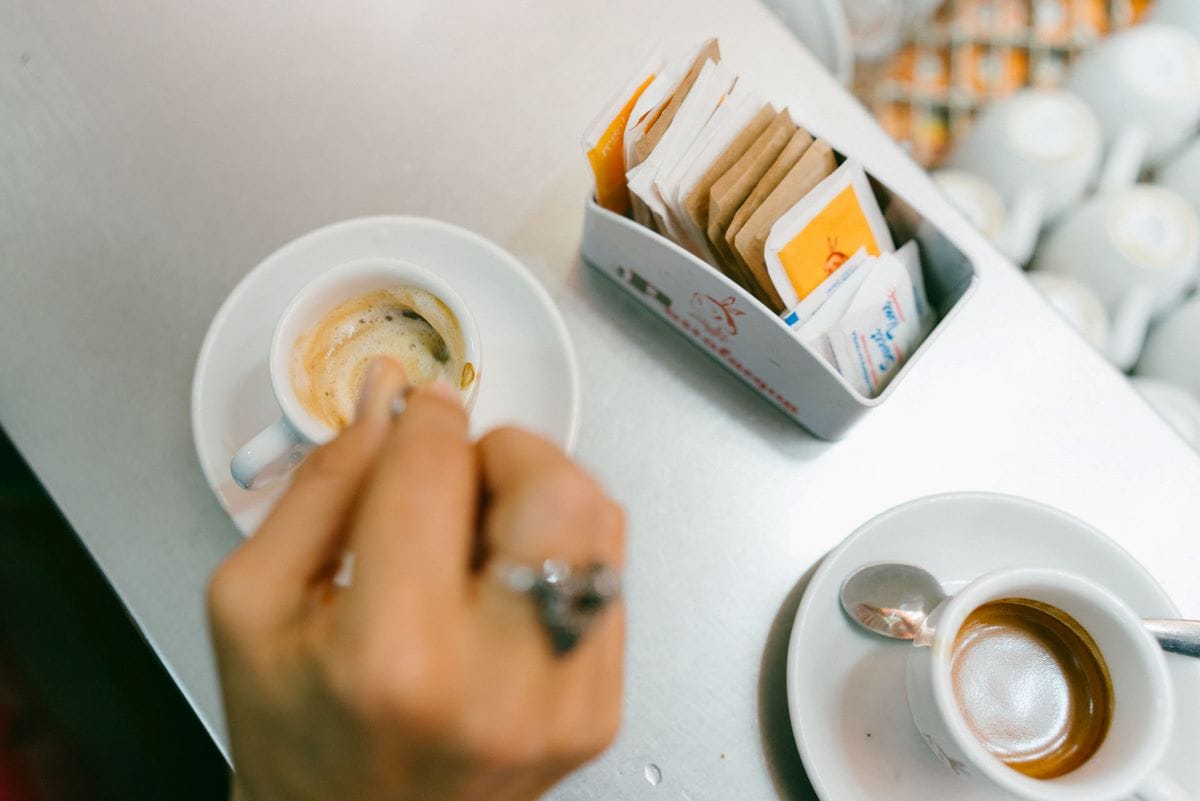
A cappuccino in the afternoon is just simply not done in Italy. Try a nice shot of espresso for a pick-me-up.
Know what coffee is what
Obviously, a latte in an American or British Starbucks isn’t the same as a latte in Italy. (Since the word is Italian and does mean “milk,” of course, Italians might have the edge on saying that the Starbucks version is plain old wrong).
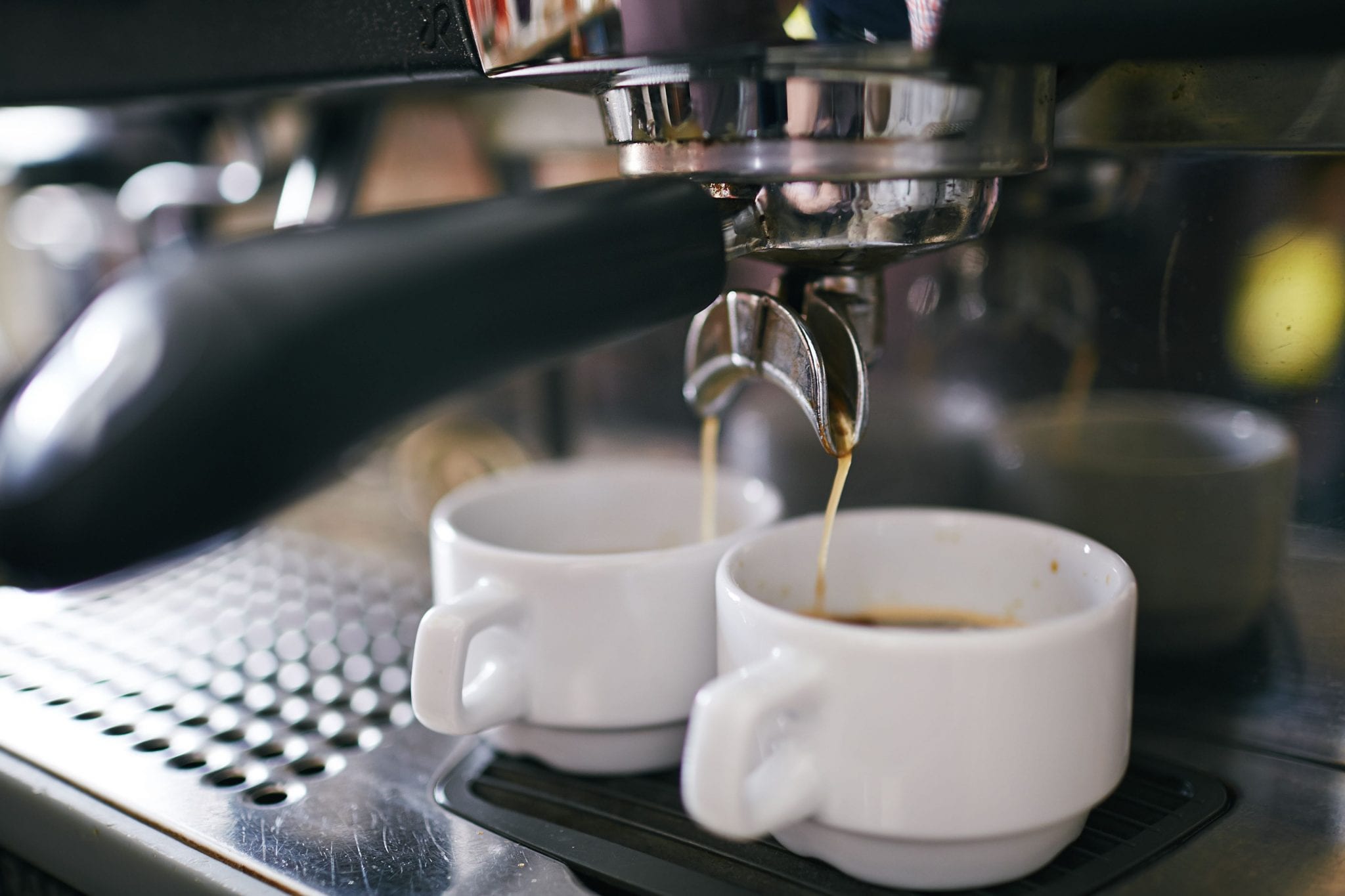
Morning, noon, or night, ordering a cappuccino in Italy lets you mingle with the locals.
Instead, here are the most popular types of Italian coffee you should know:
- Caffè: This literally means “coffee,” but folks—in Italy, it’s an espresso! You don’t have to say “espresso” when you order (although if they know you’re a tourist, they might ask just to make sure). Just two days ago, we saw a family react with shock when the “caffè” they ordered came—as espresso, rather than filtered coffee. Oops!
- Cappuccino: Espresso topped up with hot, foamed milk. It’s named after the Cappuccini, or Capuchin monks, because of the color of their hoods.
- Caffè macchiato: This means a “spotted” or “stained” coffee, and in this case, it’s spotted with a splash of hot milk.
- Latte macchiato: Guess what this means? “Spotted milk”—in this case, a lot of milk with a spot of coffee.
- Caffè americano: American-style filter coffee doesn’t exist here. Instead, if you order an “American coffee,” you’ll get Italy’s best approximate: espresso with hot water added.
- Caffè lungo: A “long” coffee, i.e. with more water. It’s different than an americano because the difference actually happens at the espresso machine: when the espresso is actually being pulled, the process is slowed down so there’s twice as much water involved.
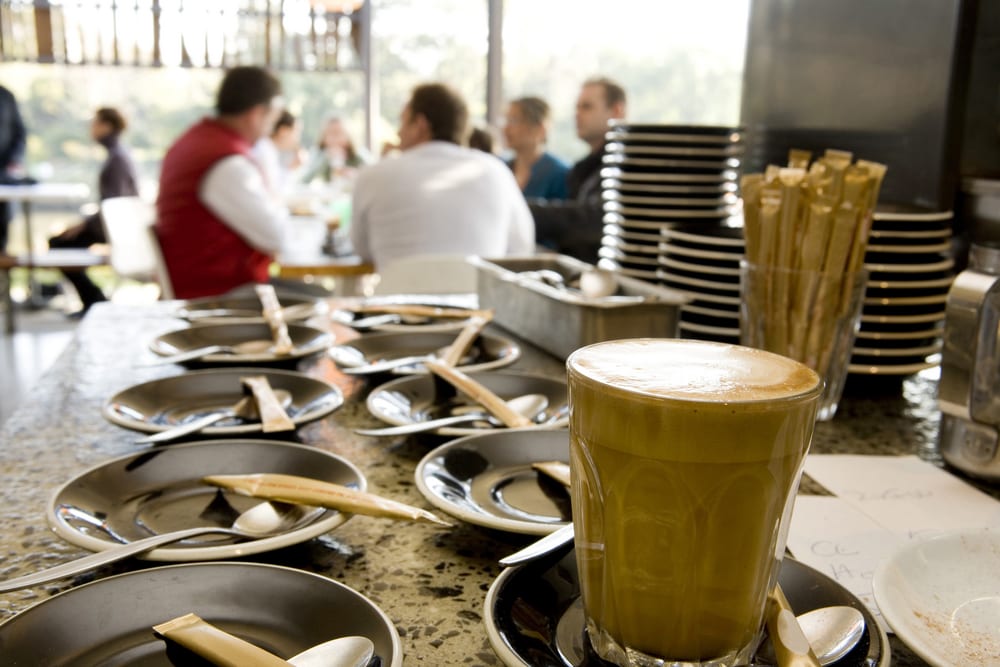
When ordering a cappuccino in Italy, try it in a glass.
Help yourself to the cremina
Except for icy, summery drinks like caffè shakerato (coffee “shaken up” with ice and sugar), coffee doesn’t usually come with any sugar in it. Instead, it’s up to you to add sugar, usually found in either jars or packets there on the counter. Some places also will have tubs of cremina, which is foam whipped with sugar. If you want (and aren’t grossed out by the communal tub), you can spoon some right into your coffee to give it a sweet little kick.
And… enjoy!
You’re now ready to experience coffee culture in Italy like an Italian! It’s one of the best, most authentic food experiences you can have. Not to mention one of the cheapest: across the country, a caffè taken at the bar costs about 1 Euro. So drink up, and enjoy!
Want to learn more about Italian culture and cuisine? Gain incredible insights into local customs with our food tours in Rome, Florence, Bologna, Naples, and Venice!
Update notice: This article was updated on December 27, 2024.

by Walks of Italy
View more by Walks ›Book a Tour
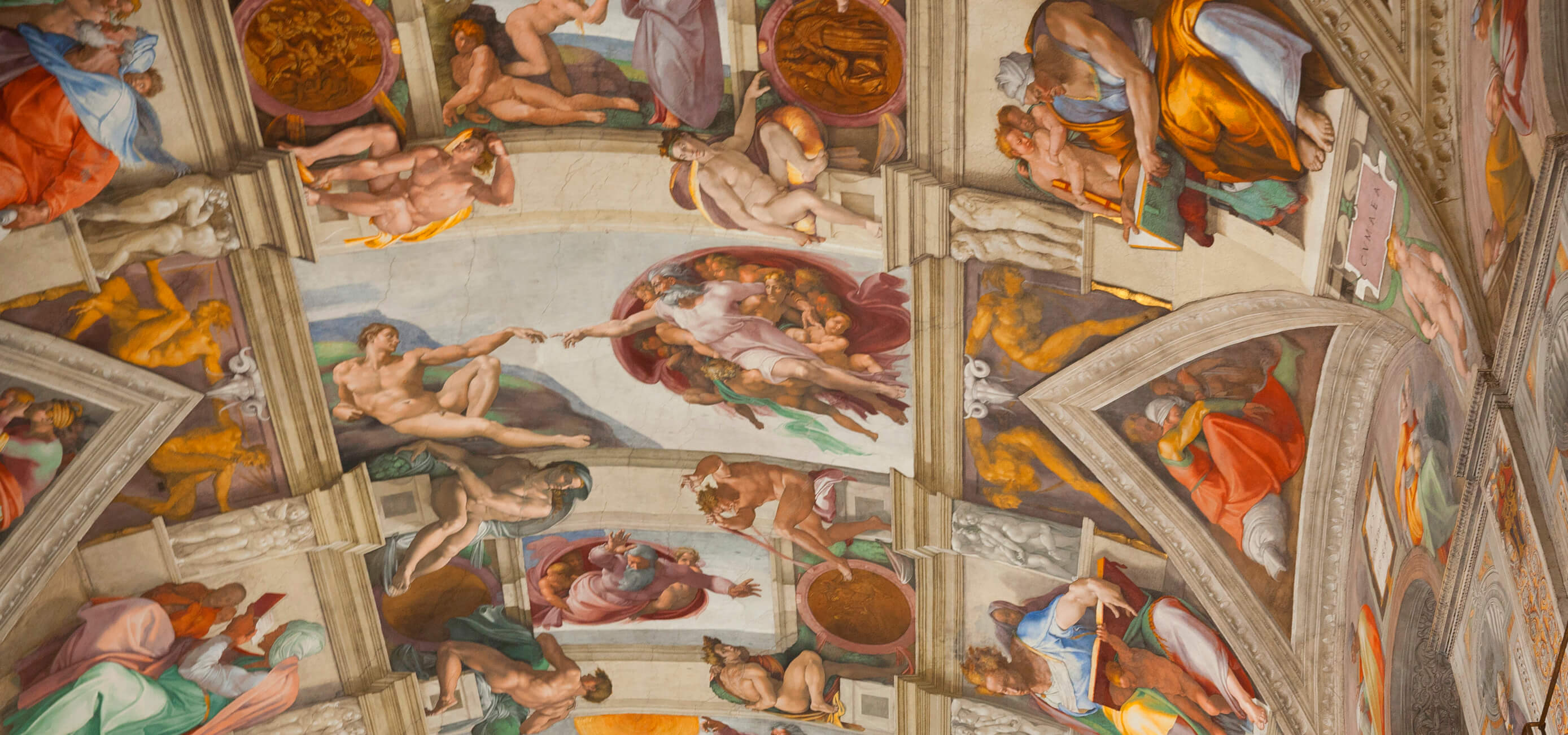
Pristine Sistine - The Chapel at its Best
€89
1794 reviews
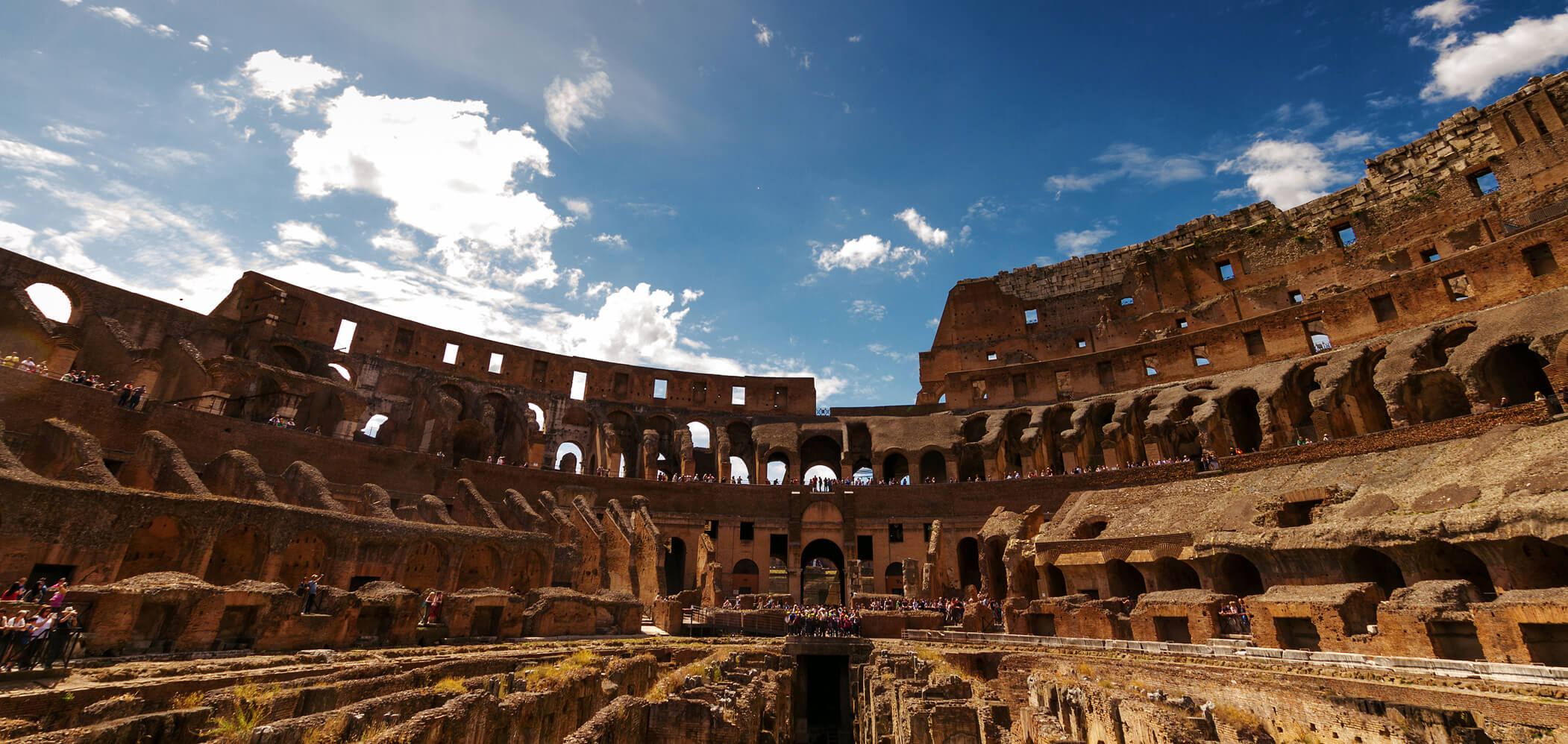
Premium Colosseum Tour with Roman Forum Palatine Hill
€56
850 reviews
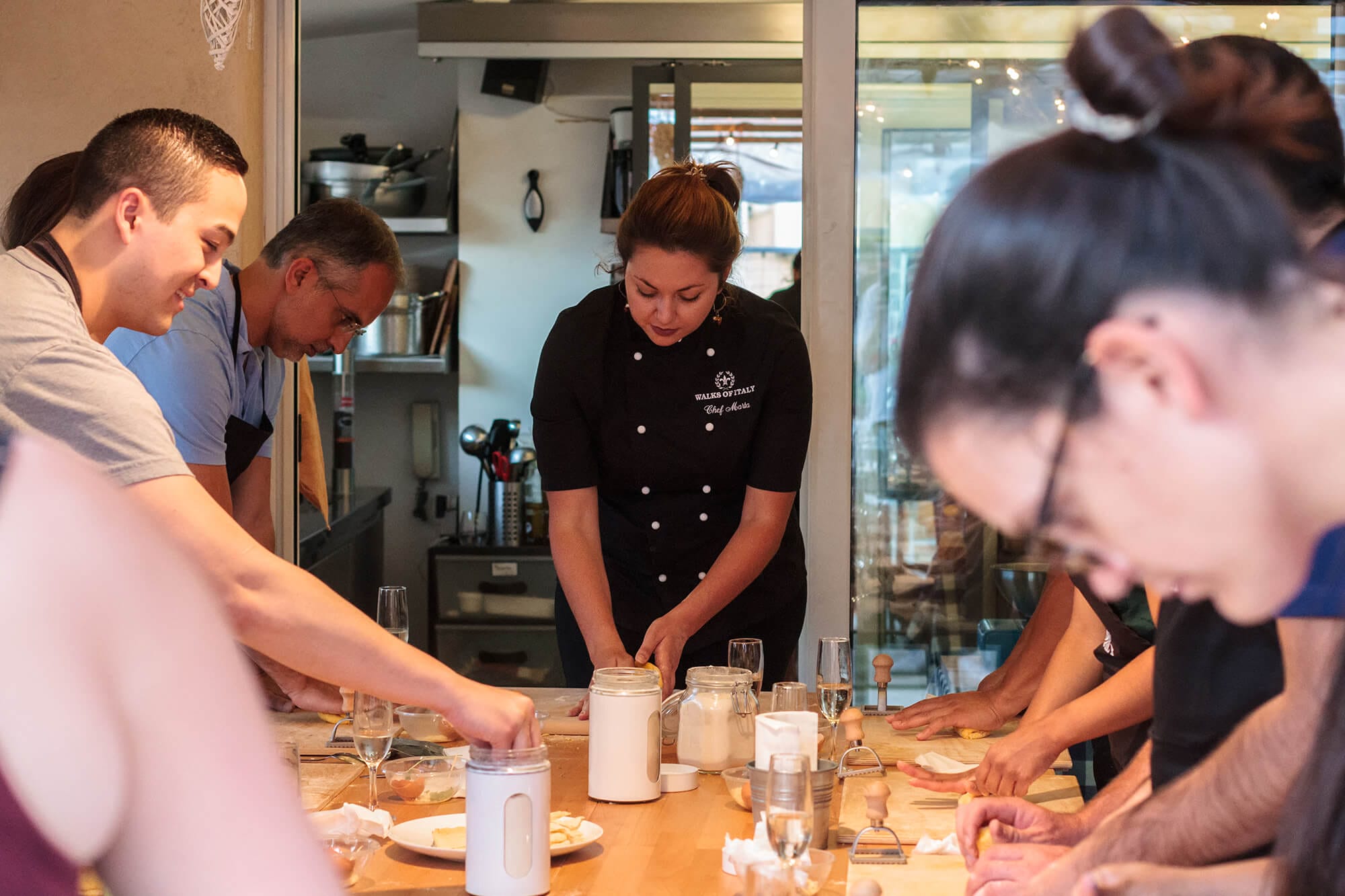
Pasta-Making Class: Cook, Dine Drink Wine with a Local Chef
€64
121 reviews
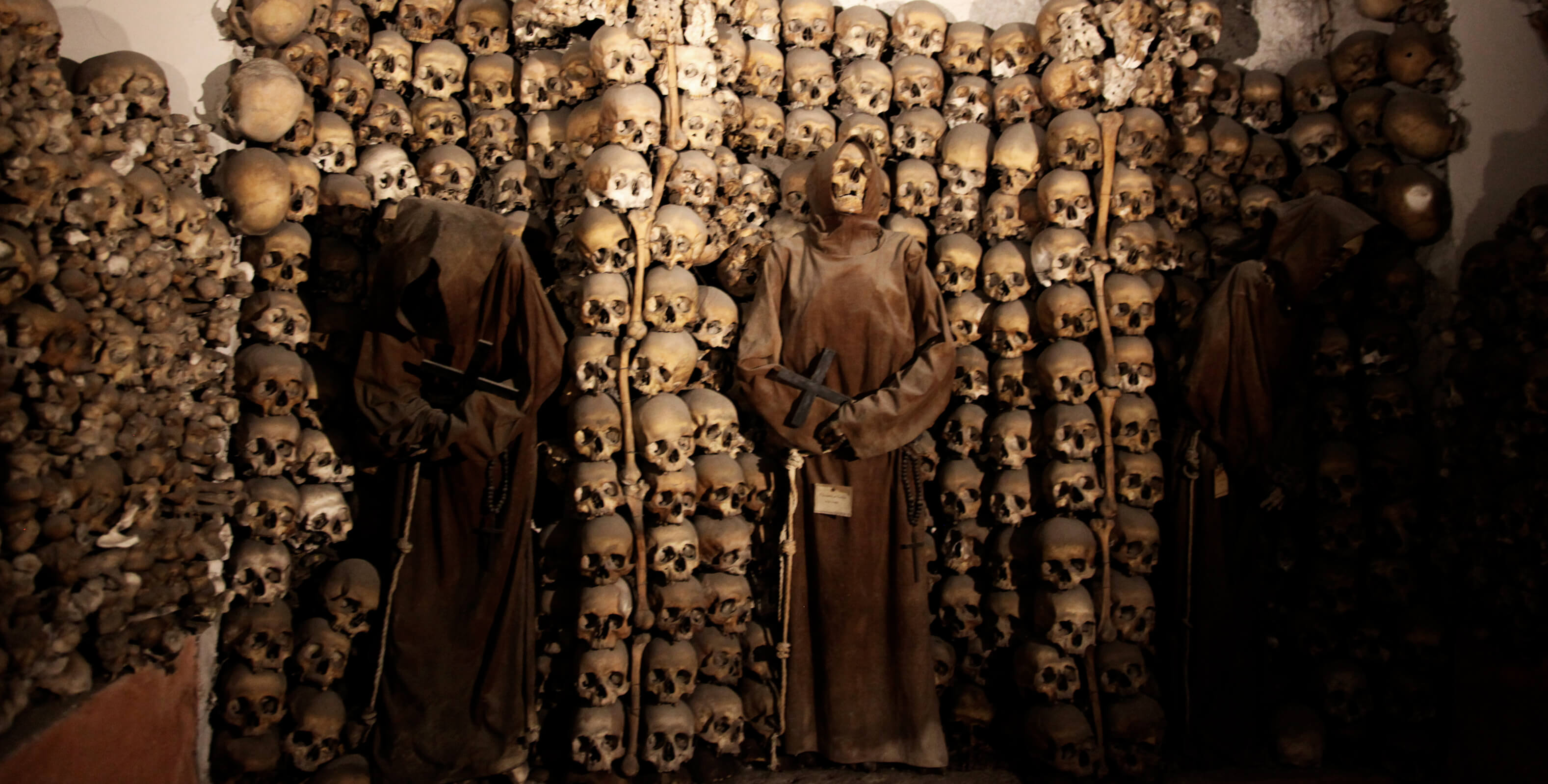
Crypts, Bones Catacombs: Underground Tour of Rome
€69
401 reviews
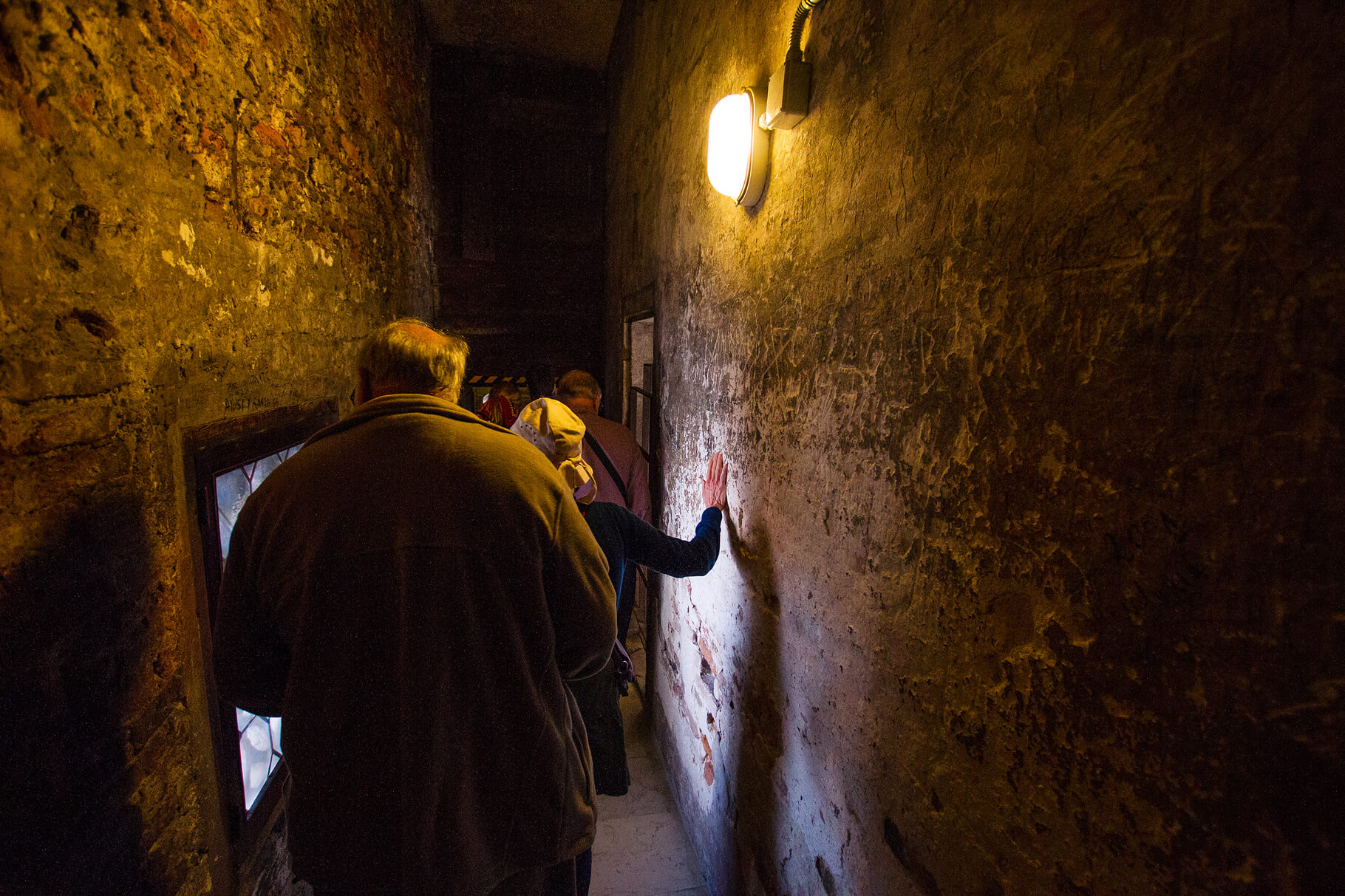
VIP Doge's Palace Secret Passages Tour
€79
18 reviews
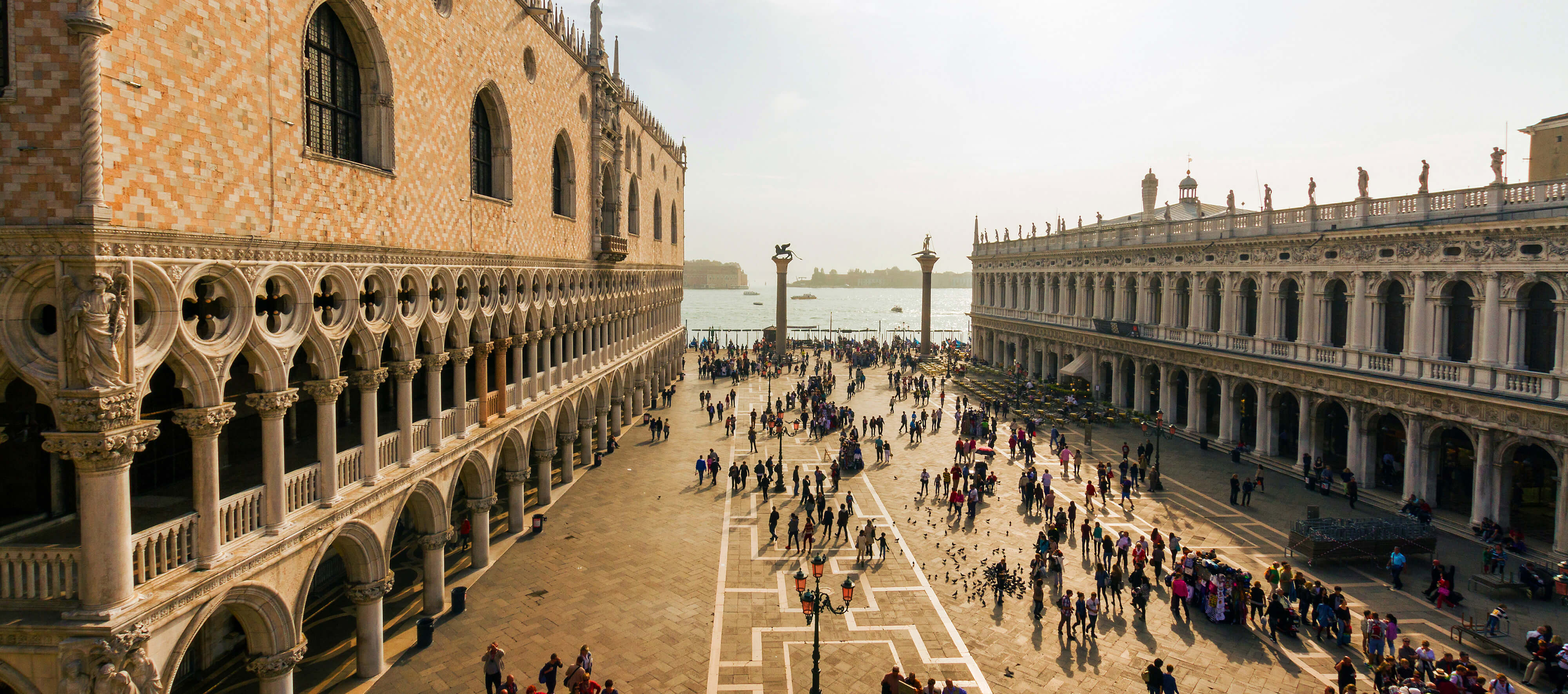
Legendary Venice: St. Mark's Basilica, Terrace Doge's Palace
€69
286 reviews

